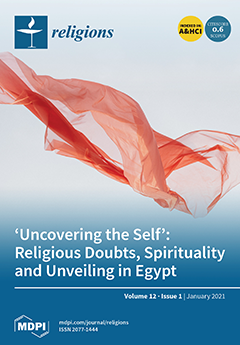This study reconsiders
The Story of the Stone as a literary exemplum of the “Buddhist conquest of China.” The kind of Buddhism that
Stone embodies in its fictional form and makes indelible on the Chinese cultural imagination simultaneously indulges in and wavers from
[...] Read more.
This study reconsiders
The Story of the Stone as a literary exemplum of the “Buddhist conquest of China.” The kind of Buddhism that
Stone embodies in its fictional form and makes indelible on the Chinese cultural imagination simultaneously indulges in and wavers from the Mahāyāna teachings of the nonduality of saṃsāra and nirvāṇa. The dialectics of truth and falsehood, love and emptiness, passion and compassion, which
Stone dramatizes and problematizes, continues to stir the creative impulses of artists in revolutionary and post-revolutionary China. This study features three of
Stone’s modern reincarnations.
Tale of the Crimson Silk, a story by the amorous poet-monk Su Manshu (1884–1918), recasts at once the idea of Buddhist monkhood and that of “free love” in early Republican China. In
Lust, Caution, a spy story by the celebrated writer Eileen Chang (1920–1995), a revolutionary heroine is compelled to weigh the emptiness/truth of carnal desire against the truth/emptiness of patriotic commitment. Decades later, love and illusion dwell again at the epicenter of a fallen empire in the director Chen Kaige’s (b. 1952) 2017 film,
The Legend of the Demon Cat, in which an illustrious poet sings testimony to the (un)witting (com)passion of a femme fatale.
Full article





